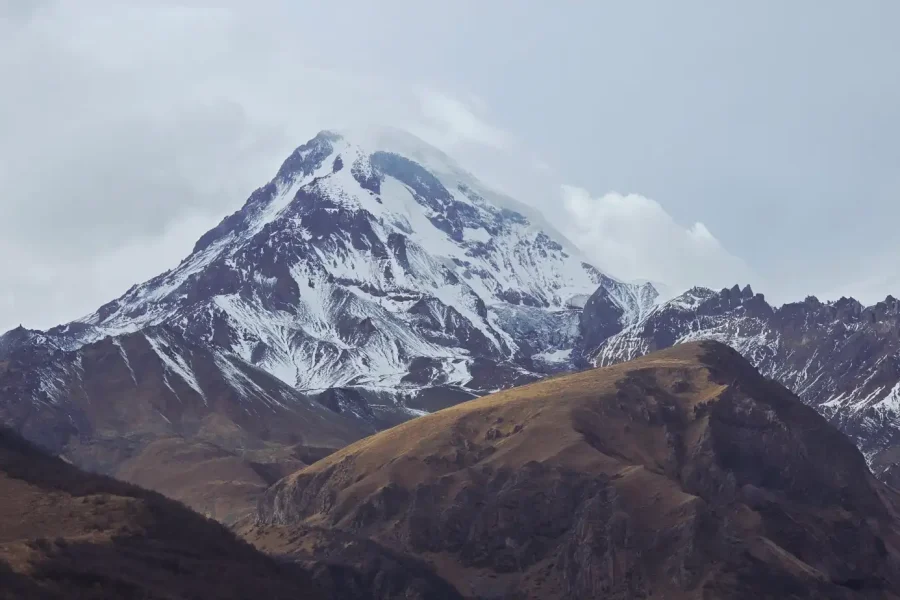The Apeniskhevi River: A Lagodekhi Waterway
The Apeniskhevi River (მდინარე აფენისხევი) is a small but vital river in the Lagodekhi Municipality of Georgia’s Kakheti region. Originating on the southern slopes of the Kakheti Caucasus Range, it flows down towards the Alazani Valley, merging with the larger Alazani River. This mountain stream is a key feature of the local landscape, particularly for the village of Apeni, which it flows near. Like many similar rivers in Kakheti, its primary role is in agriculture, providing essential water for the irrigation of vineyards, orchards, and farmlands that characterize this fertile region.
Fed by rainfall and snowmelt, the Apeniskhevi’s volume can vary greatly between seasons, becoming a rushing torrent in the spring and a much calmer stream in late summer. Its upper course runs through forested foothills, offering a scenic and pristine environment. While not a destination for major tourism itself, it is part of the rich natural and agricultural tapestry of Lagodekhi, a district famous for the Lagodekhi Protected Areas, one of Georgia’s oldest and most important nature reserves.
ℹ️ General Information
- Name of River: Apeniskhevi River (მდინარე აფენისხევი)
- Location: Lagodekhi Municipality, Kakheti Region, Georgia.
- Length: 16 km (10 miles)
- Basin Size: 43 km² (16.6 sq mi)
- Source (Origin): Southern slope of the Kakheti Caucasus Range.
- Mouth (Where it flows): Left tributary of the Alazani River.
- Main Tributaries: Small mountain streams.
📍 Geography & Course
The Apeniskhevi carves a relatively straight path from the mountains to the plains. It begins in the forested slopes of the Caucasus, descending through a narrow valley that gradually widens as it approaches the vast Alazani plain. Its riverbed is rocky and alluvial, carrying sediment down from the mountains which contributes to the fertility of the valley floor.
🌿 Nature & Ecology
The upper valley of the river is rich in forest biodiversity, with stands of hornbeam, oak, and beech trees. This area provides a corridor for local wildlife moving down from the higher elevations of the nearby protected areas. The river itself supports a micro-ecosystem of aquatic insects and small fish. Its greatest ecological contribution is as a clean water source for the agricultural lands of the Alazani Valley.
🏛️ History & Culture
The region around the Apeniskhevi is part of the historical Hereti province, which later became part of Kakheti. The area is rich in archaeological sites and has been a center of agriculture and viticulture for thousands of years. While the river itself has no major monuments on its banks, it flows through a landscape that has been continuously inhabited and cultivated since antiquity. The nearby town of Lagodekhi and its surroundings contain several small medieval churches and historical points of interest.
🚣 Activities & Tourism
The Apeniskhevi valley is an area for local, nature-focused recreation rather than large-scale tourism:
- Exploring Lagodekhi: The river is close to the Lagodekhi Protected Areas, making it part of the broader landscape for visitors hiking or exploring the reserve.
- Local Picnics: Its banks are pleasant spots for local families to relax.
- Agrotourism: The river’s importance to local vineyards makes it a feature for anyone touring the wineries of this part of Kakheti.
🛤️ Accessibility
The river and the village of Apeni are easily accessible, located just off the main road that runs through the Alazani Valley in the Lagodekhi district. The area can be reached by car from Tbilisi, Telavi, or Sighnaghi. The region is best visited from spring through autumn.



Leave a review